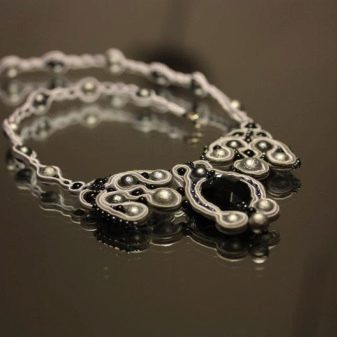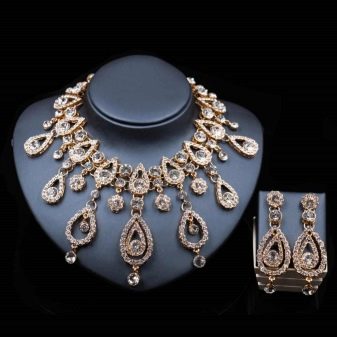Recently, the demand for jewelry made of high-grade platinum is only increasing. This metal with unique chemical and physical parameters has excellent aesthetic qualities. In the jewelry industry use samples from 850 to 950. Unfortunately, not knowing the differences in precious metals, you can fall into the hands of scammers. In order to prevent this, let's look at what are the samples and differences of platinum from other valuable metals and alloys.
Kinds
A test on jewelry looks like a stigma, but with a certain number indicated. This number is determined by the ratio of the precious metal directly to additional components, it is listed in a special standard. And the higher this number, the cleaner the metal. Nameplates are knocked out on jewelry, where, in addition to the stigma, a sign of the manufacturer is placed. The sample number is applied to the inside of the product.

Some sources indicate that a platinum sample starts at 750, but this is not entirely true. Noble metal has such a composition - it is either white gold or silver. Platinum products are only 950 samples.
If you see metal 925, then this so-called sterling silver is one of the most sought-after samples in jewelry.

As you know, platinum is used not only in the manufacture of jewelry, but also in the radio industry, dental prosthetics, in the manufacture of commemorative coins from precious metals, in the chemical industry.



Marking
All precious metals in the world are measured by several systems of measures. The metric system has been adopted in the Russian Federation, CIS countries and the European Union, and the carat system in the USA and Canada. The marking for all alloys is the same and equivalent to the sample, it is considered the ratio of the base precious metal to the impurity of additional metals and minerals per 1 kilogram of alloy. Let us consider in more detail the marking of this precious metal.
- 850. In terms of carats - 20 carats. In such an alloy, 85% is platinum and 15% are impurities from copper, cobalt, iridium, and tungsten. The metal is dull silver. Ignorance can be mistaken for silver.

- 900. In a carat system, 22 carats. Composed of 90% platinum and 10% ligature. Such an alloy is rarely used in jewelry. The metal is silver, dull glossy in appearance.

- 950. in a carat system, 23 carats. An alloy in which 95% platinum and 5% impurities. It has a bright gloss and high strength. On the hallmark of this test put PT950. The main raw materials for the jewelry industry, dentures, minted souvenir coins.

- 999. Almost pure platinum, impurities less than 1%. It is used in the manufacture of measuring and bank ingots, as well as in the industry for special equipment.


How to determine?
Of course, there are many fraudsters in the precious metals market, but you can determine the authenticity of platinum at home.
Here are some effective ways. Platinum, like any metal, has a specific density, for example, a density of 950 samples is 21.05 g / cm3. And if in doubt whether your jewelry is fake or not, then you can check it yourself. Density is determined using pharmacy or special electronic scales and a measuring container with water. Weigh the product, and then lower it into a measuring cup. The volume of liquid that appeared above the mark is collected with a syringe, it is easier to find out the cubic volume. Divide the volume of water by weight in grams and look at the resulting figure.
Approximately 21.05 - genuine metal.


The following method of determination is very simple. Necessary drip on the decoration with iodine-alcohol solution. On real platinum, iodine does not brighten and is wiped off without any stains. Method for determining the authenticity of platinum with royal vodka also exists. Recall chemistry lessons from school - imperial vodka dissolves both silver and gold, but not platinum. The solution is made in a ratio of 1: 3 from nitric and hydrochloric acids. There is also a method using liquid ammonia. When the metal comes into contact with this liquid, dark traces remain on the metal surface, the only exception is platinum.

Platinum and silver are often confused, so you need to be able to distinguish one from the other.
- Despite the similarities in color, silver is dimmer, and over time it becomes coated with a coating. Platinum does not fade and remains as bright.
- Silver is almost 2 times lighter than platinum. Weigh approximately the same jewelry from similar metals - silver will be easier.
- Due to its high density, platinum is very resistant to deformation and mechanical damage. It is almost impossible to leave scratches or a dent on it, with a silver decoration it will be the other way around.
- Refractory platinum will not darken, if it is heated with an open flame, it will hardly heat up. For its melting, special melting equipment is needed. Silver is easy enough to melt.


There are also significant differences between white gold and platinum.
- White gold weighs less than platinum, since gold products are marked with 750 breakdowns and are lighter in weight of the metal.
- Gold, representing an alloy of gold and silver, nickel or palladium during wear, can cause an allergic reaction. Platinum does not have such a phenomenon.
- Gold, like silver, is subject to deformation, although to a lesser extent. Platinum is much more stable.
- Platinum is slightly duller in color than gold.


The decision to purchase a platinum product is up to you, but still this metal and its jewelry will be a good investment. A pleasant bonus will be durability, the external beauty of jewelry and the absence of plaque from time to time.
Why platinum is more expensive than gold can be found in the next video.



